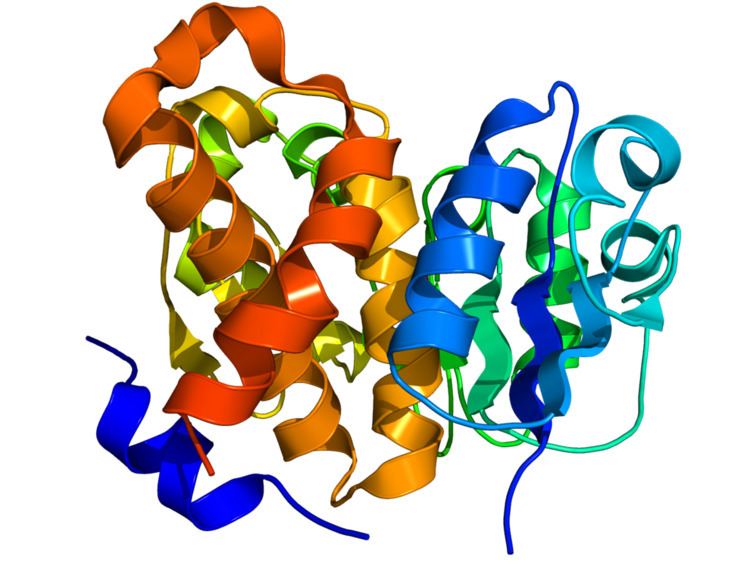Entrez 55739 | Ensembl ENSG00000213995 | |
 | ||
Aliases NAXD, LP3298, CARKD, NAD(P)HX dehydratase External IDs MGI: 1913353 HomoloGene: 6333 GeneCards: NAXD | ||
Carbohydrate kinase domain containing protein (abbreviated as CARKD), encoded by CARKD gene, is a human protein of unknown function. The CARKD gene encodes proteins with a predicted mitochondrial propeptide (mCARKD), a signal peptide (spCARKD) or neither of them (cCARKD). Confocal microscopy analysis of transfected CHO (Chinese-hamster ovary) cells indicated that cCARKD remains in the cytosol, whereas mCARKD and spCARKD are targeted to the mitochondria and the endoplasmic reticulum respectively. The protein is conserved throughout many species, and has predicted orthologs through eukaryotes, bacteria, and archea.
Contents
Gene
Human CARKD gene has 10 exons and resides on Chromosome 13 at q34. The following genes are near CARKD on the chromosome:
Protein
This protein is part of the phosphomethylpyrimidine kinase: ribokinase / pfkB superfamily. This family is characterized by the presence of a domain shared by the family. CARKD contains a carbohydrate kinase domain (Pfam PF01256). This family is related to Pfam PF02210 and Pfam PF00294 implying that it also is a carbohydrate kinase.
Predicted properties
The following properties of CARKD were predicted using bioinformatic analysis:
Tissue distribution
CARKD appears to be ubiquitously expressed at high levels. Expression data in the human protein, and the mouse ortholog, indicate its expression in almost all tissues. One peculiar expression pattern of CARKD is its differential expression through the development of oligodendrocytes. Its expression is lower in oligodendrocyte progenitor cells than in mature oligodendrocytes.
Binding partners
The human protein apolipoprotein A-1 binding precursor (APOA1BP) was predicted to be a binding partner for CARKD. This prediction is based on co-occurrence across genomes and co-expression. In addition to these data, the orthologs of CARKD in E. coli contain a domain similar to APOA1BP. This indicates that the two proteins are likely to have originated from a common evolutionary ancestor and, according to Rosetta stone analysis theory, are likely interaction partners even in species such as humans where the two proteins are not produced as a single polypeptide.
Clinical significance
Based on allele-specific expression of CARKD, CARKD may play a role in acute lymphoblastic leukemia. In addition, microarray data indicates that CARKD is up-regulated in Glioblastoma multiforme tumors.
